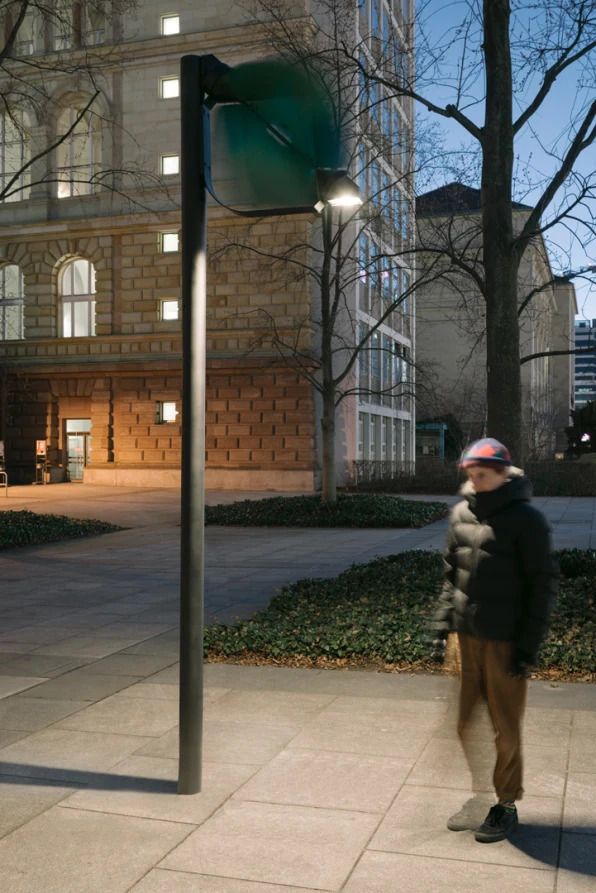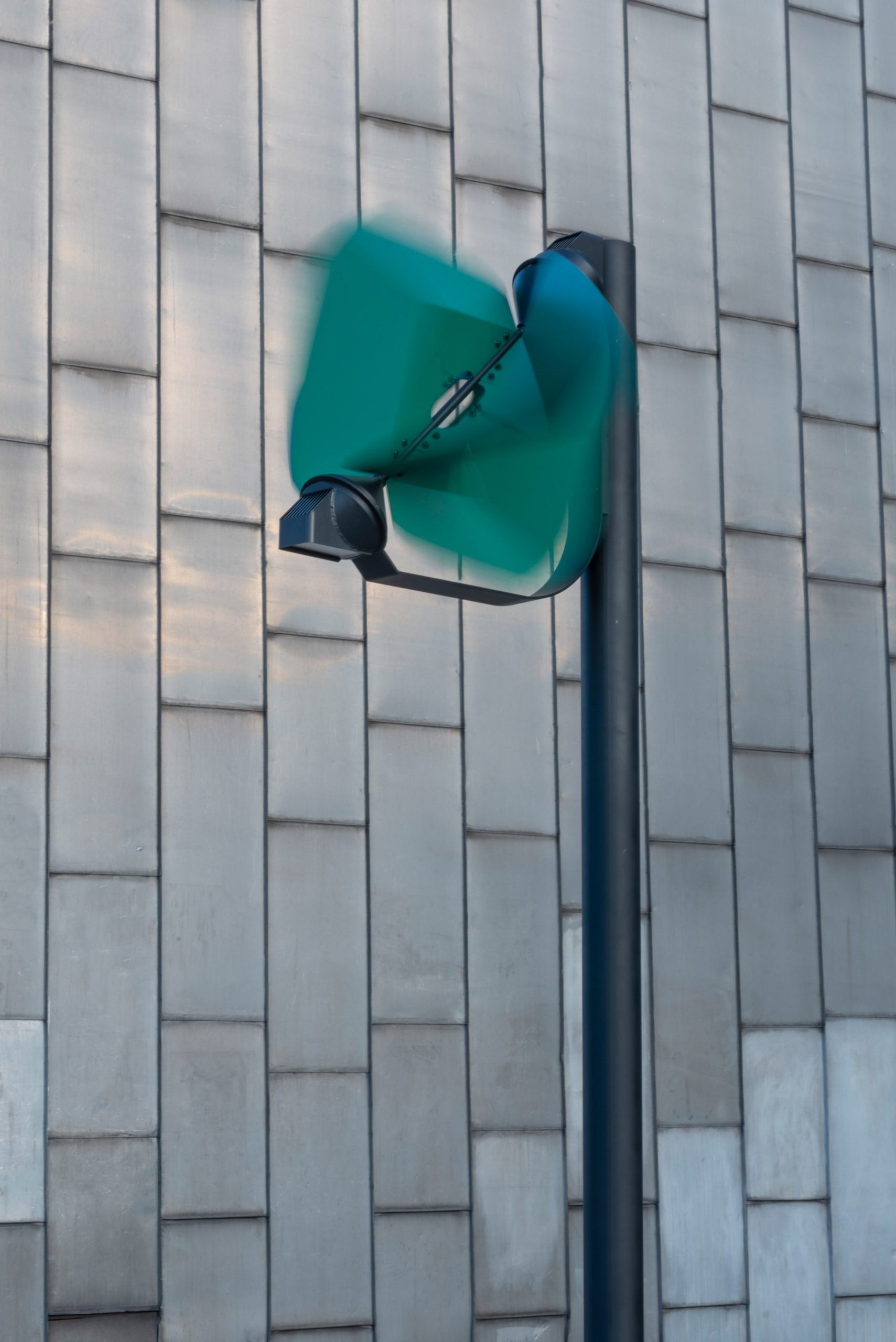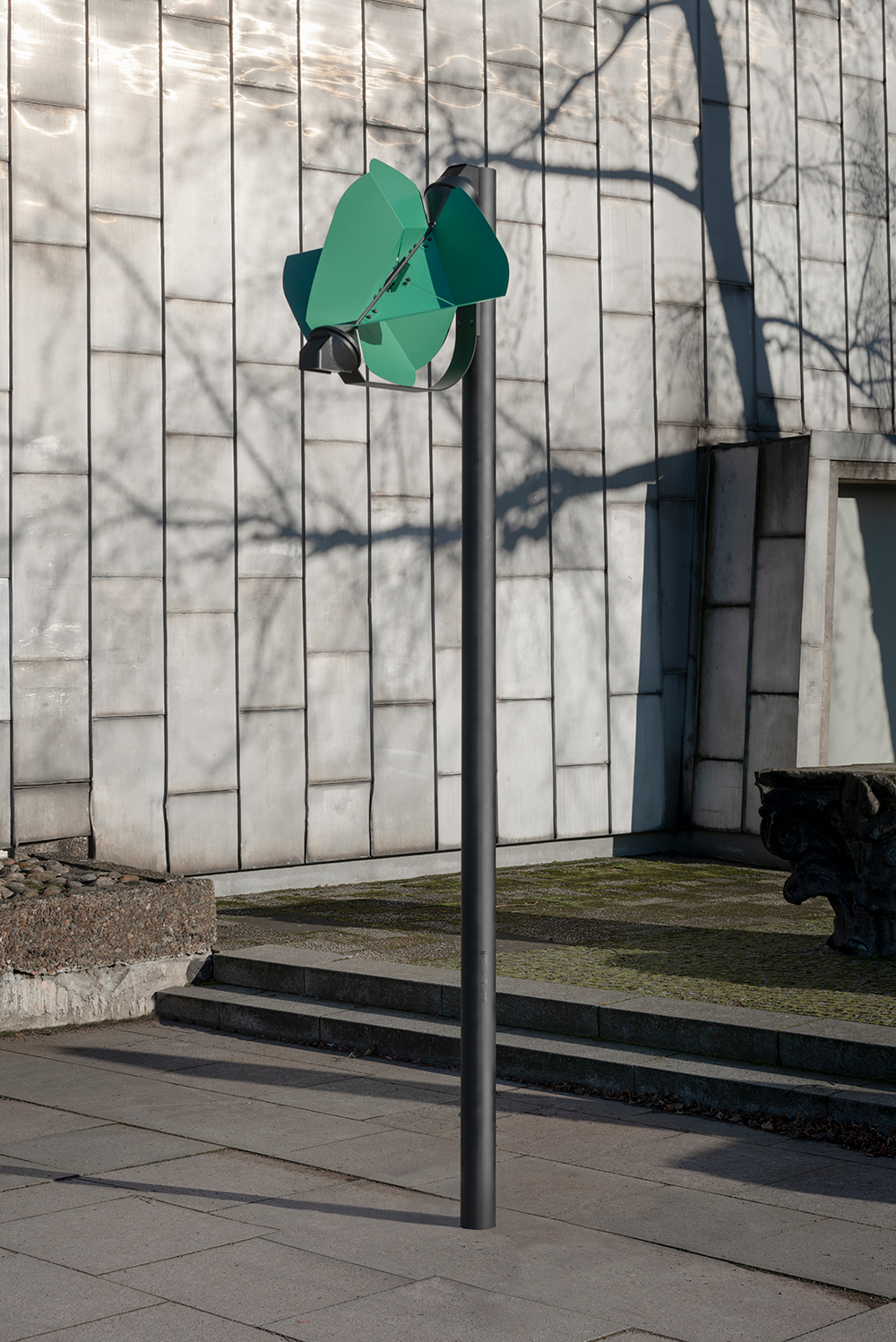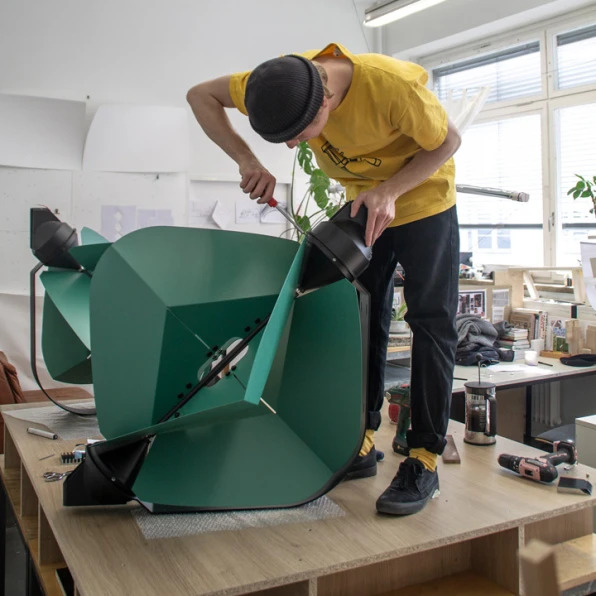
- Sustainable Planet -
- 4mins -
- 531 views
Ingenious wind-powered street light turns on when needed and is insect-friendly
PAPILIO is a street lamp designed to tackle light pollution and reduce greenhouse gas emissions by generating energy with an integrated wind rotor, while incorporating an insect-friendly light spectrum.
Wind-powered streetlamp produces light pollution and is considerate to insects
Light pollution and growing energy consumption is increasingly having a drastic impact on nature and humans. A German product design student has come up with an ingenious solution to both: PAPILIO — a street lamp with an insect-friendly light spectrum, generating energy by using an integrated wind rotor. According to its designer, Tobias Trübenbacher, the climate-neutral energy production becomes an aesthetic play, enriching the public space – both during the day and at night.

A integrated rechargeable battery stores generated electricity for calm periods
In a bid to reduce the ecological footprint of street lighting, product design student Tobias Trübenabacher developed ‘PAPILIO’, a wind-powered street lamp that powers up only when needed. Created for his graduation project at the university of the arts in berlin, PAPILIO aims to tackle light pollution and reduce greenhouse gas emissions, while minimising the impact on insects and other nocturnal creatures.
A integrated rechargeable battery stores the generated electricity and can thus also bridge periods of calm, making it possible to operate PAPILIO completely autonomously in windy areas without the necessity for expensive underground electricity infrastructure, which offers benefits and new opportunities particularly for remote regions. alternatively, the product can also be connected to an existing power grid in order to feed surplus energy into the network during strong winds.
In order to minimise light pollution, the product is designed as a ‘full-cut-off light’, only emitting light downwards with a beam angle far below the horizontal.
The used light spectrum is less attractive to insects due to a lower blue component and a warm colour temperature of 2800 Kelvin. To further reduce the harmful impact of artificial light, the streetlamp provides an infrared sensor, activating the light only when it is actually needed.
Source: DesignBoom

PAPILIO’s design is kind to insects
Trübenbacher fine-tuned the light spectrum in collaboration with a group of scientists and researchers to be less appealing to insects, whose attraction to conventional blue-toned street lights makes them vulnerable to predators as well as collisions, overheating and dehydration.
"Light pollution not only has bad health effects on humans – like causing sleep disorders, depression, cardiovascular diseases, diabetes and cancer – but has also a serious impact on flora and fauna," Trübenbacher explained.
"It is estimated that currently in Germany alone, in one single summer night around 1.2 billion insects die because of street lighting."
Source: Dezeen

The streetlight’s design is a visual signal of clean energy in action
Trübenbacher describes the lamp’s climate-neutral energy generation as “an aesthetic play” that enhances public space, beautifying streets and taking on the climate crisis in one fell swoop. “Design not only determines how street lights are working. It can also shape our attitude towards them and consequently affect how we use them,” he says. Because energy creation is often an invisible process, projects such as these help “the production of electricity become comprehensible.”
Trübenbacher has tested two working prototypes of Papilio around Berlin so far. It’s early in the process—he only presented the project in May at his university—but he plans to do longer-term testing and then “get support from people who believe in the idea as much as I do.”
Source: FastCompany

Video: Nikolai Marcinowski
Music: Max Cooper Source: Vimeo

